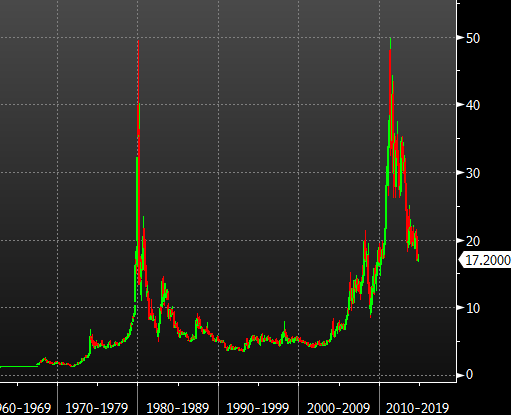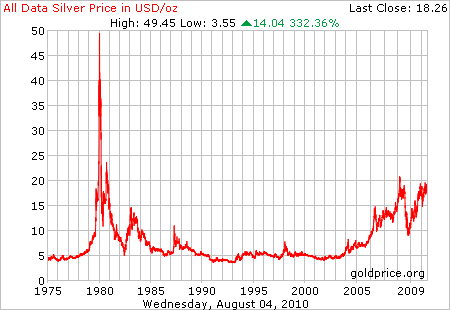Educate Yourself The Hunt Brothers and the Silver Market
Post on: 21 Июнь, 2015 No Comment

The Hunt Brothers and the Silver Market
Brian Trumbore
President/Editor, StocksandNews.com
With silver hitting its highest level since October 1980, around $20.80 as I go to post (9/20), and up 24% on the year, compared to golds 16% advance, I thought Id re-run my most popular piece on the Net, the story of the Hunt Brothers.
In 1973, the Hunt family of Texas, possibly the richest family in America at the time (some say the world), decided to buy precious metals as a hedge against inflation. Gold could not physically be held by private citizens so instead the Hunts began to buy silver in enormous quantities.
By 1979, the sons of patriarch H.L. Hunt, Nelson Bunker and William Herbert, together with some wealthy Arabs, had formed a silver pool. In a short period of time they had amassed more than 200 million ounces of the metal, equivalent to half the worlds deliverable supply.
When the Hunts had first begun accumulating silver back in 1973, the price was in the $1.95/ounce range. Early in 79, the price was up to $5. By January 1980, it had risen ten-fold to $50.06. [Intraday, it peaked at $54.]
But the Hunts were borrowing heavily to secure their purchases, much of it at a time when the prime rate was 19%, so their costs were huge. And while the brothers and their partners had cornered the silver market, with the public joining in the chase as everyone quickly cleaned out their attics and sold their tea services, a combination of changed trading rules on the New York Metals Market (COMEX), the intervention of the Federal Reserve, and the government of India allowing the export of silver (which was the favorite form of savings in that economy), thus bringing a ton more on the market, all conspired to put an end to the game. [David Colbert / Eyewitness to Wall Street]
Silver began to slide, culminating in a 50% one-day decline on March 27, 1980, what became known as Silver Thursday, with the price plummeting from $21.62 to $10.80.
The collapse of the silver market meant countless losses for speculators, let alone the Hunts, and even after working out a debt repayment plan with their brokers, the Hunt brothers were still forced to declare bankruptcy as by 1987 their liabilities had grown to nearly $2.5 billion against assets of $1.5 billion. In August 1988, the Hunts were convicted of conspiring to manipulate the market.
One other experience in the silver bubble worth noting, according to author Edward Chancellor (Devil Take the Hindmost), is the experience of an official at the Peruvian Ministry of Commerce, employed to hedge his countrys silver production, who ended up losing $80 million by illicitly selling silver short. Said Chancellor, Although a relatively small sum for a sovereign nation, it was an omen: the rogue trader had appeared on the modern financial scene.
As for the U.S. equity market, it had its own troubles during the rise and fall of silver. The Dow Jones peaked on February 13, 1980, at 903.84. The day of the collapse, March 27, the Dow closed at 759.98, a decline of 16% in just 6 weeks. [However, intraday, the loss between the 2/13 high of 918.17 and the 3/27 intraday low of 729.95 was actually 20%.]
For many traders the collapse in silver was the final straw for a stock market already under siege from worries as diverse as the Iranian hostage crisis, the Russian invasion of Afghanistan and soaring interest rates. [The consumer price index climbed at a 13% rate for 1979. The prime lending rate hit 22% in early 1980.] But by year end the whole decline was almost forgotten. The Dow finished the year at 963.99, thanks in large part to the euphoria over the election of Ronald Reagan.
Sources:

Edward Chancellor, Devil Take the Hindmost
David Colbert, Eyewitness to Wall Street
Harold Evans, The American Century
David Hackett Fischer, The Great Wave
John Steele Gordon, The Business of America
Suzanne McGee / Wall Street Journal
Richard Reeves, Profile of Power














